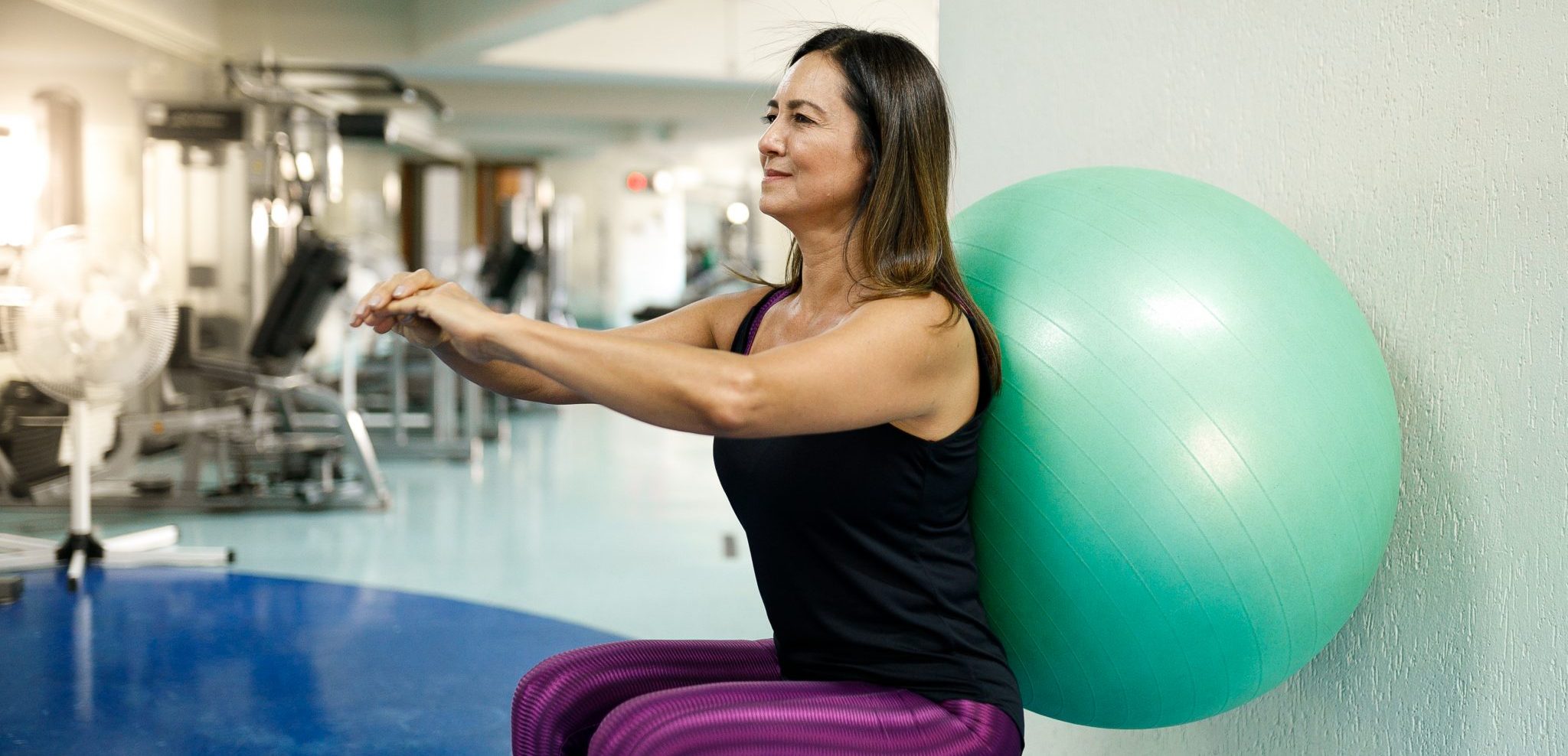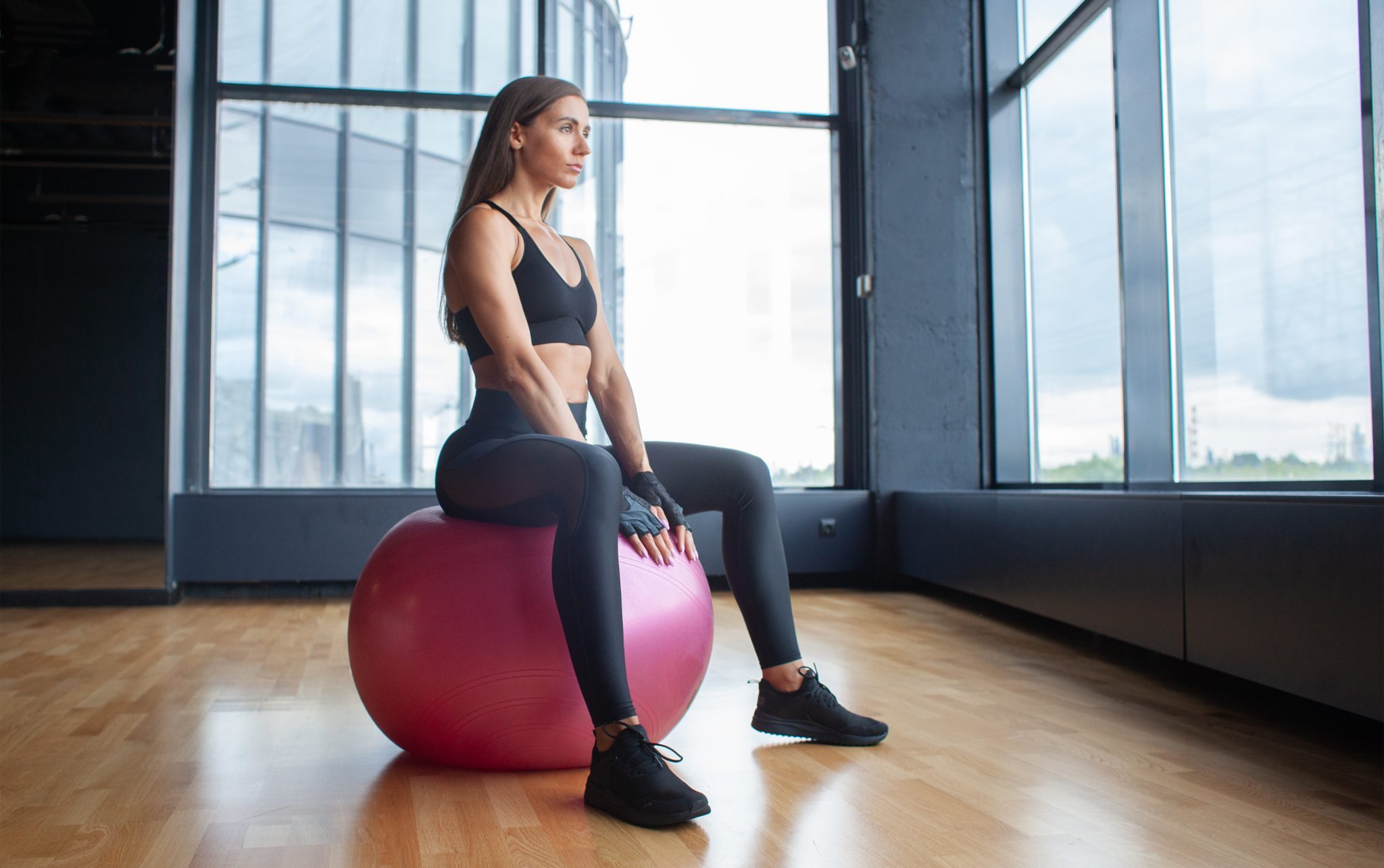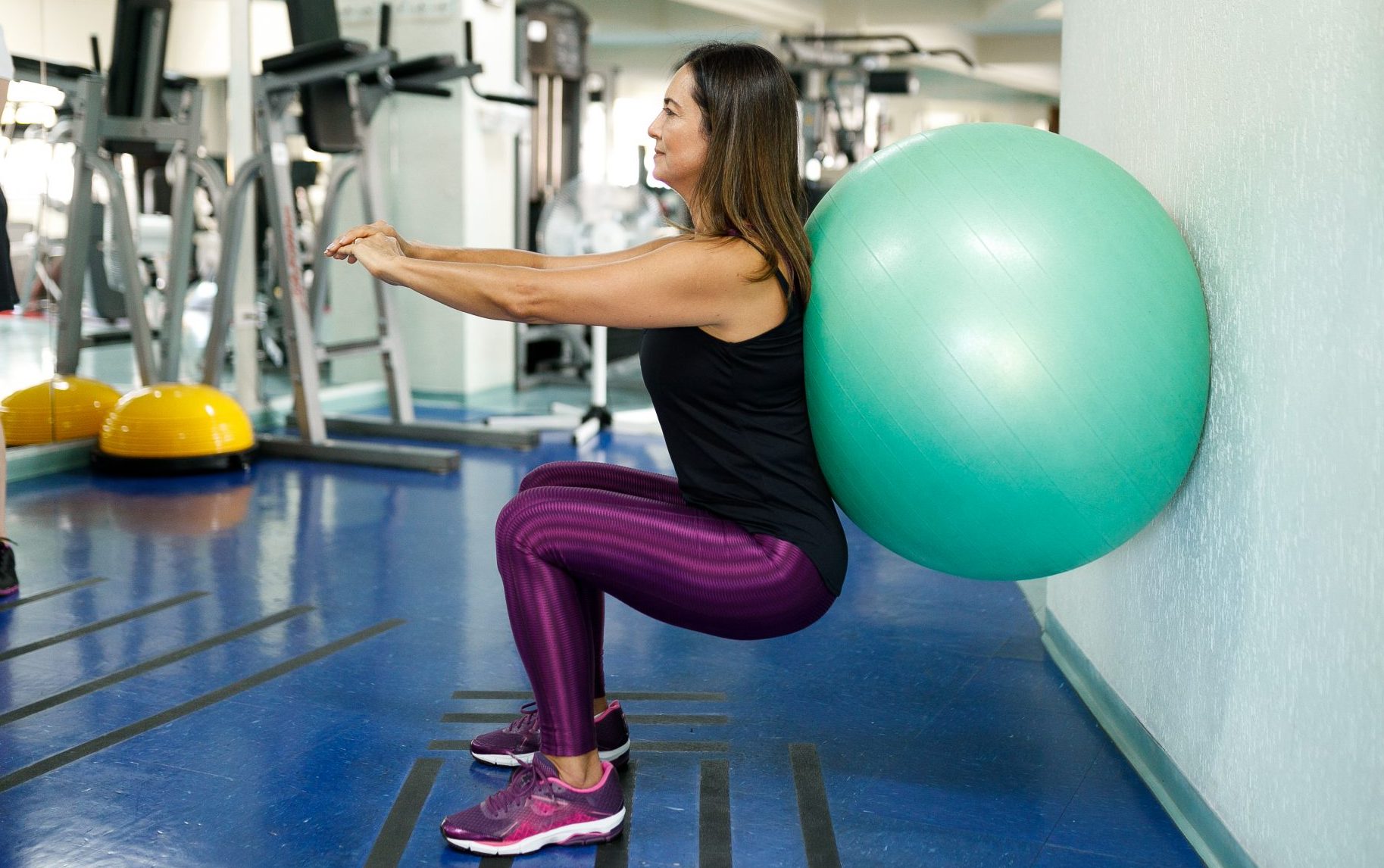The wall squat with ball is an awesome exercise to strengthen your lower body. It is targeting your hamstrings and quadriceps muscles, and it is very beneficial for your legs and back. Swiss ball used for the squats helps you develop balance, stability, and good posture.
In order to check whether you have picked the right size ball, do the following: Sit on the ball and check whether your knees and hips form a 90-degree angle. If they do, this ball suits you and you are all set for the workout!
Ball wall squat – a guide
1. Starting position:
Put the ball against the wall. Slowly lean against it, so the top of the stability ball is positioned into your lower back, also touching your tail-bone. Place your feet so they are hip-width apart, 6-12” out in front of your body, so your back touches the wall and gives it some of your weight.
2. Step two
Place your hands on your thighs. Carefully lean into the ball, while loading the weight of your body through your heels and pulling your shoulders down and back. Pay attention to your spine – try not to arch your lower back while leaning down.
3. Downward phase
On the inhale, carefully lower your body while rolling the stability ball down the wall, slowly going a bit deeper into the squats position. Make sure the ball is in contact with your tail-bone, low- and mid-back, while you go down. Concentrate on dropping your hips under the ball, but pay attention to your knees in order to avoid putting excessive stress on them. Try not to move your feet, so you don’t lose balance. Lower yourself so your thighs are parallel to the floor (or stop earlier if you feel that’s too hard for now) and try to hold in this position for a few seconds.
4. Upward Phase
On the exhale, slowly start pushing your body up. Concentrate on extending your hips, so you can bring yourself back into the starting position. Push upwards until you return in the position where your hips and knees are fully extended.
Repeat the squats exercise 5-10 times with ball securely placed between the wall and your spine.





